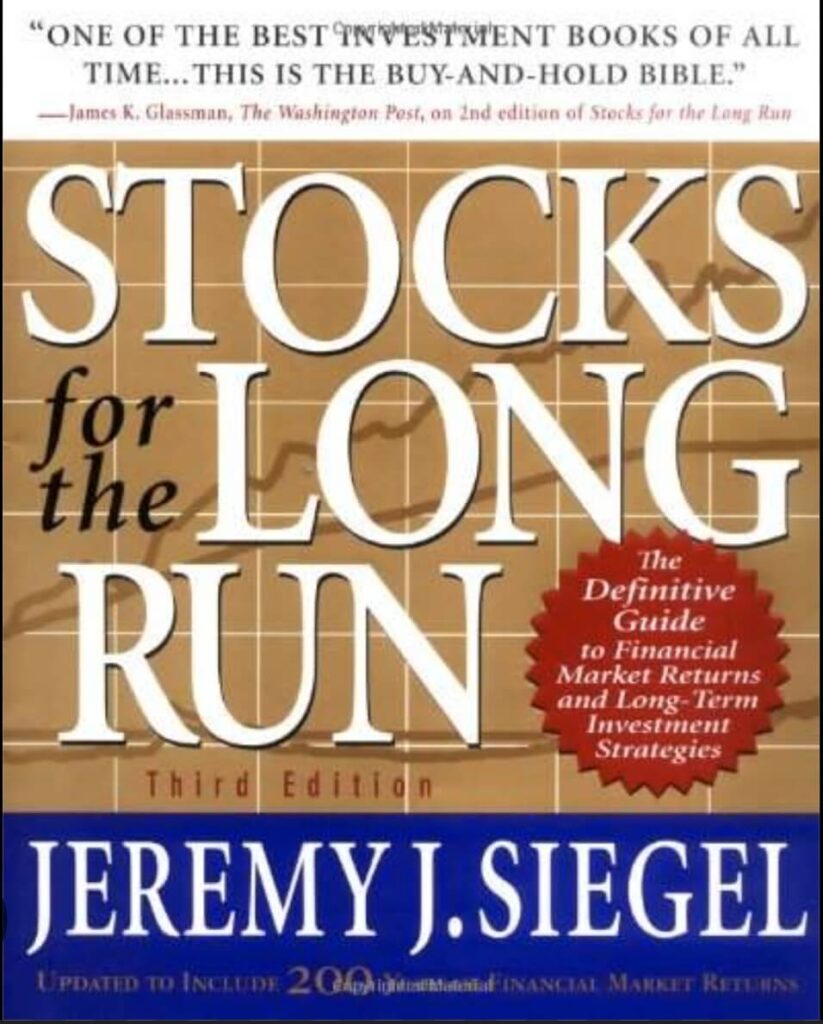Jeremy Siegel’s Stocks for the Long Run has long been hailed as a seminal work in investment literature. Since its first publication in 1994, the book has been updated through six editions, with the latest released in 2022. Siegel, a finance professor at the Wharton School, presents a comprehensive analysis of historical stock market performance, advocating for long-term equity investment as the optimal strategy for wealth accumulation. Wikipédia
While the book offers a wealth of data and insights, it’s essential to assess its applicability in today’s dynamic financial landscape.
📚 The Core Thesis: Stocks as the Superior Long-Term Investment
Siegel’s central argument is that, over extended periods, stocks consistently outperform other asset classes such as bonds, gold, and cash. He supports this claim with extensive historical data, demonstrating that equities have provided higher real returns, even when accounting for inflation and market volatility.
The book delves into various aspects of market behavior, including valuation metrics, investor psychology, and macroeconomic influences. Siegel emphasizes the importance of a disciplined, long-term investment approach, cautioning against market timing and short-term speculation.Shortform
🧠 Strengths: Comprehensive Analysis and Educational Value
One of the book’s notable strengths is its thorough examination of historical market data, offering readers a deep understanding of financial market trends over two centuries. Siegel’s analysis provides valuable context for investors, highlighting the resilience of equities through various economic cycles.Topel
Additionally, the book serves as an educational resource, introducing readers to fundamental investment concepts and strategies. Siegel’s clear explanations and logical structure make complex topics accessible, particularly for those new to investing.
🤔 Criticisms: Relevance and Practical Application
Despite its merits, Stocks for the Long Run is not without criticisms.
📉 Historical Focus May Limit Contemporary Applicability
Some readers have noted that the book’s heavy reliance on historical data may not fully account for the complexities of modern financial markets. One Amazon reviewer commented:
“This book is similar to an educational textbook that teaches the fundamentals of investing. The book was cut and dry with very old examples. I have a hard time accepting that patterns relevant in the early 1900s still hold true to theory today.” Dividend Power
While historical trends provide valuable insights, the rapidly evolving nature of today’s markets—characterized by technological advancements, globalization, and new asset classes—may require more contemporary analysis.
🔄 Repetitive Content and Dense Presentation
Some readers have found the book’s content to be repetitive and densely packed with data, potentially making it less engaging for a general audience. The extensive use of charts and statistical information, while informative, may overwhelm readers seeking more concise guidance.
🗣️ Reader Feedback: Mixed Reviews
On Amazon UK, Stocks for the Long Run holds a solid rating, with many readers praising its depth and educational value. However, some express reservations about its practicality in the current investment climate.
A recurring theme among reviews is the book’s suitability for readers with a strong interest in financial history and theory, rather than those seeking actionable investment strategies.
🏁 Final Verdict: ★★★★☆ (4/5)
Stocks for the Long Run remains a valuable resource for understanding the historical performance of equities and the rationale behind long-term investing. Siegel’s thorough analysis and clear presentation make it a worthwhile read for those interested in the foundations of investment theory. Dividend Power
However, readers should be aware of its limitations, particularly regarding the applicability of historical data to today’s rapidly changing financial environment. For investors seeking current, practical advice tailored to modern markets, supplementary resources may be necessary.
If you’re interested in a more contemporary approach to investing that incorporates recent market developments and emerging asset classes, consider exploring additional literature or consulting with a financial advisor to complement the insights gained from Siegel’s work.




